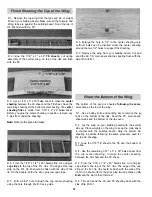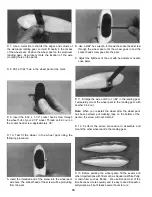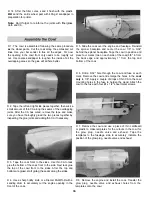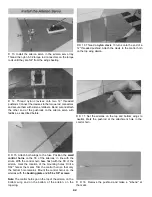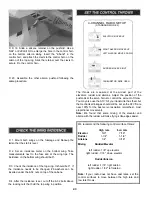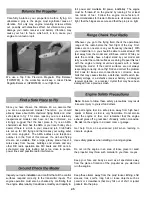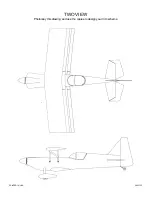
Note: The balance and control throws for the Ultimate
have been extensively tested This chart indicates the
settings at which the Ultimate flies best Please set up your
model to the specifications listed above If, after you
become comfortable with your Ultimate, you would like to
adjust the throws to suit your tastes, that's fine Too much
throw can force the plane into a stall or snap roll, so
remember, "more is not always better."
Note: This section is VERY important and must NOT be
omitted' A model that is not properly balanced will be
unstable and possibly unflyable.
balance up to 1/4" forward or backward to change its flying
characteristics Moving the balance forward may improve
the smoothness and stability, but the model may then
require more speed for takeoff and may become more
difficult to slow for landing Moving the balance aft makes
the model more agile with a lighter, snappier "feel" and
often improves knife-edge capabilities In any case, please
start at the location we recommend Do not at any time
balance your model outside the recommended range.
D 2 With the wing attached to the fuselage, all parts of the
model installed (ready to fly) and an empty fuel tank, hold
the model upside down with the stabilizer level
D 3 Hold the model at the balance point If the tail drops,
the model is "tail heavy and you must add weight to the
nose to balance the model If the nose drops, it is "nose
heavy" and you must add weight to the tail to balance the
model If possible, first attempt to balance the model by
changing the position of the receiver battery If you are
unable to obtain good balance by doing so, then it will be
necessary to add weight to the nose or tail to achieve the
proper balance point.
Note: Nose weight may be easily installed by using a
"spinner weight" or gluing lead weights to the firewall Tail
weight may be added by using Great Planes (GPMQ4485)
"stick-on" lead weights.
D 1 The balance point (C.G.) is located 2-3/8" back from
the leading edge of the bottom wing, next to the fuse sides
as shown in the sketch and on the fuselage plan Accurately
mark the balance point on the top of the bottom wing on both
sides of the fuselage Use thin strips of tape or a felt-tip pen
to make the marks
Hint: Reference the full-size fuse plan to help you locate
the proper balance point This is the balance point at which
your model should balance for your first flights After initial
trim flights and when you become more acquainted with
your Ultimate, you may wish to experiment by shifting the
At this time check all connections including servo horn
screws, clevises, servo cords and extensions Make sure
you have installed the nylon retainer on the Screw-Lock
Pushrod Connector and the silicone retainers on all
the clevises.
Follow the battery charging procedures in your radio
instruction manual You should always charge your transmitter
and receiver batteries the night before you go flying and at
other times as recommended by the radio manufacturer
44


